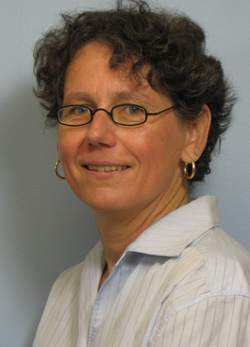White and African American Lesbian, Bisexual Women Trend Overweight: Study.
A new study in the American Journal of Public Health by BU School of Public Health researchers found that compared to heterosexual women, white and African American lesbian and bisexual women are more likely to be overweight at the age of 18 and maintain that weight through adulthood.
A research team of teacher and student – Ulrike Boehmer, associate professor of community health sciences, and Nicholas P. Deputy, who received his MPH in 2009 — analyzed data from the California Health Interview Survey to investigate intersections of sexual minority status, race and ethnicity, and weight status along gender lines at two points in time: at age 18, and as adults, at the time of the survey. The survey captured demographical information, individual health information, weight status and age.

“What is particularly new and innovative about the study is that we looked at the relationship between sexual orientation and body weight within different race and ethnicity groups,” Boehmer said. “Usually, past research has explored just the relationship between sexual orientation and weight, without looking at racial and ethnic groups.”
The detailed analysis is intended to assist program planners in the development of targeted interventions for obese and overweight men and women.
Results indicated that while most gay and bisexual men had a greater prevalence of healthy weight as adults, white and African American sexual minority women tended to be overweight at 18 and retain that weight in adulthood, when compared to heterosexual women of the same race and ethnicity.
Results also showed weight trends among other sexual minorities of varying races, such as greater odds of healthy weight among white gay and bisexual men, and Latino and Asian gay men.
“One possible explanation for the different weight patterns seen in sexual minorities and their heterosexual peers is a difference in body image perception,” said Boehmer and Deputy. Weight perception and body image “also have been proposed to explain different weight patterns between racial/ethnic sub-groups.”
Past research has linked obesity to sexual orientation. Compared with heterosexual men, gay and bisexual men have a lower body mass index (BMI) and decreased odds of being overweight or obese. For women, the relationship between sexual orientation and weight is inverse: studies have shown that lesbian women have an increased likelihood of being overweight and obese compared with heterosexual women. Some evidence suggests that the weight disparity between sexual orientation groups may begin at an early age.
But the racial and ethnic patterns of obesity have been under-studied in sexual minority populations, the authors said.
“I think our findings make important contributions to the literature about the relationship between sexual orientation and weight status,” said Deputy. “Previous research had identified sexual minority women as a group that has disproportionally high risk of overweight and obesity. Our research has expanded on this, demonstrating there are differences in timing of this disparity and by race/ethnicity.
“Now that we have identified more specific subgroups of sexual minority women that are at risk, “ he added, “public health practitioners can build tailored interventions that address the specific needs of this group of women. Ultimately, I hope our results will not only help explain where disparities exist, but will help solve a piece of the larger obesity epidemic.”
Deputy, now a doctoral student at Emory University’s Laney Graduate School, in the nutrition and health sciences program, said he was unaware of the dearth of information on weight status in sexual minority populations prior to working with Boehmer. He said the “positive experience” of assisting in research helped to motivate him to pursue a doctoral degree in nutrition.
A previous study that he and Boehmer co-authored, in 2010, found that gay and bisexual men had significantly lower prevalence of being overweight or obese, compared to heterosexual men. That study suggested that sexual orientation had an independent effect on BMI that was not mediated by eating or exercise behaviors.
The findings from that study, published in Preventive Medicine, “motivated us to continue to explore the association between sexual orientation and weight status in the following study,” Deputy said.
In the new study, Deputy and Boehmer conclude that their findings “suggest a critical need for interventions targeting white and African American lesbian and bisexual adolescents to prevent overweight status by age 18 years, and interventions during adulthood to reverse these women’s adverse weight trajectory.”
To develop effective interventions that are culturally appropriate for at-risk white and African American lesbian and bisexual women, “more information is needed about how race and sexual orientation interact to influence BMI,” they said.
Submitted by: Lisa Chedekel chedekel@bu.edu